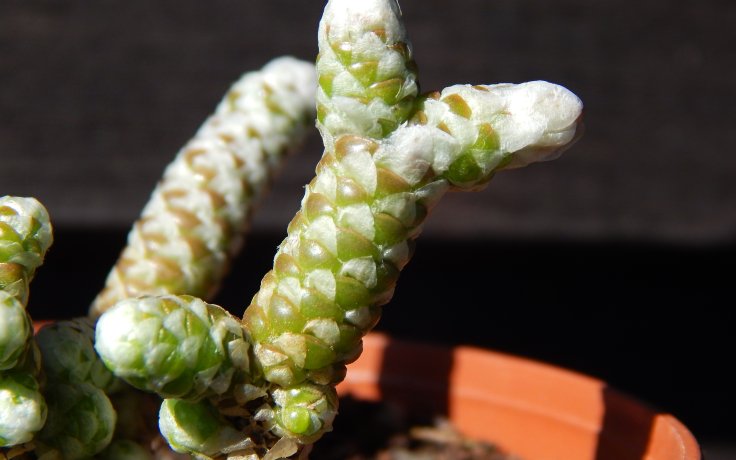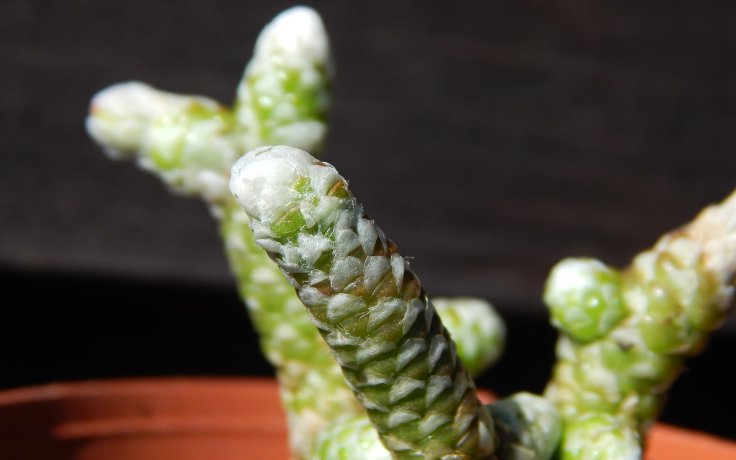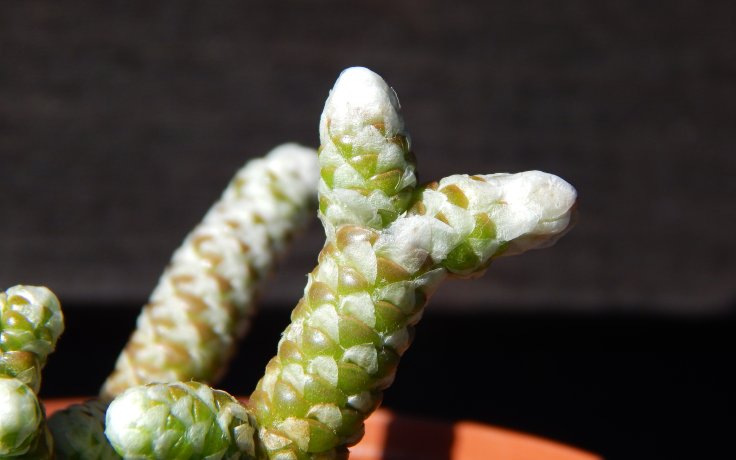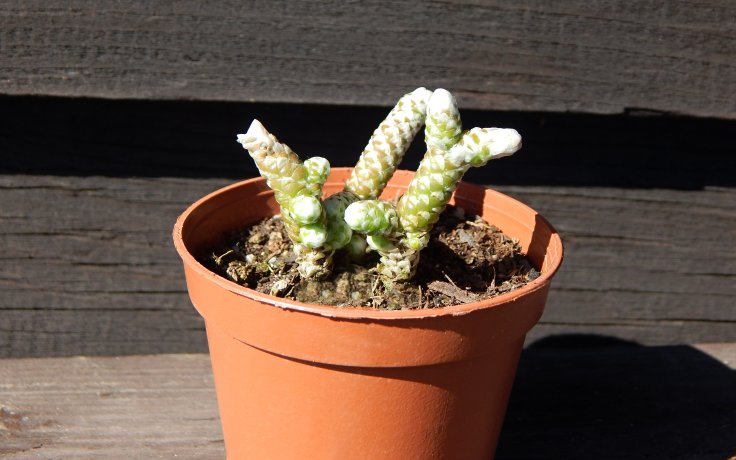- Home
- Succulents
- Avonia
- Avonia papyracea





Avonia papyracea
Ideally placed in a sunny location, can tolerate partial shade.
Always water a few days after the substrate has dried out. In winter, water more sparingly.
It can tolerate -3.9 °C in the short term. However, the plant is not hardy.
The most striking feature of the plant is the white palisades, which decorate the body of the succulent and give it an even more atypical appearance. Thanks to its miniature stature, a large pot is not necessary even when the plant is old, and the seemingly bare stems stand out even in minimal space.
Avonia papyracea, formerly known as Anacampseros meyeri var. minor or Anacampseros papyracea, is a bizarre succulent plant native to South Africa. The plant was separated from the genus Anacampseros because of its distinctly different characters, which include papery scales in the leaf axils. This species is endemic to the arid semiarid Little Karoo and Great Karoo regions of South Africa.
Avonia papyracea is characterised by the white paper overlapping palisades, which are often larger than the leaves themselves, partially hiding them. The tiny leaves are fleshy and green, up to 0.8 cm long and 0.3 cm wide, and grow densely crowded together. The plant has a dwarf succulent habit with a few slender stems and ground growth.
Fragrant creamy white flowers with five rounded petals appear in summer. These flowers usually bloom for only 2 to 4 hours.
From autumn to spring, the succulent is hardly watered, but if you have the opportunity, place it in a well-ventilated, bright and cool room or greenhouse. We can fertilise it, but it is not necessary to fertilise it in large quantities. The succulent suits a well-drained substrate and, thanks to its diminutive stature and leaf size, does not need a large pot even at an advanced age.